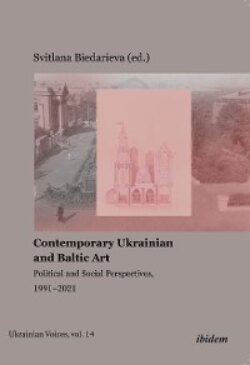Читать книгу Contemporary Ukrainian and Baltic Art - Группа авторов - Страница 8
На сайте Литреса книга снята с продажи.
Postsocialist and postcolonial sutures
ОглавлениеCountless changes in the Baltics as a postsocialist region, however, have not brought the promised equality with the “old” capitalist societies, despite those changes being faster than history or the abovementioned acquisition of survival kits. Hence, along with the transnational and global flows, issues of belonging and identity, with an emphasis on the locally specific—traditions, culture, mentality, and history—have remained essential both in everyday perceptions and in socio-political agendas. Nor has the distinction between “we” and “others” disappeared from political or cultural dialogues, referring to inclusion and exclusion policies and the peripheral position in relation to the West. At the same time, in their relations with the rest of the world, local cultures have often positioned themselves through difference—separating who does and does not belong to their imagined community. Similar to its analysis in the context of postcolonial cultures, one could say that the otherness associated with the postsocialist transformations holds complexity and ambiguity. It is a twofold feature; that is, “both identity and difference, so that every other, every different than and excluded by is dialectically created and includes the meaning of the colonizing [or external—I.A.] culture even as it rejects its power to define,” as the postcolonial scholar Sunita Sinha has summarized. (Sinha 2008, 4)
This constantly contradictory state or postsocialist drama has not only been a transformational but also a disorienting and traumatic experience. In the mid-2000s, Lithuanian philosopher Arūnas Sverdiolas, describing changes after 1989, reflected on the fact that this “post-” concealed the features of the break, rupture, and otherness, as the consequences of the previous system were revealed in new, formerly unseen, and impossible forms. Referring to the situation in the region not just as postsocialist but also postcolonial, Sverdiolas metaphorically compared the aftermath of the isolation of socialist times as a change from life in a retort, or a flask, to life in a sieve—a certain type of filter that allows some things through and suppresses others, thus continuing partial isolation and marginality or provincialism. When different, previously inaccessible layers of world culture are suddenly passed through this sieve “in an instant, many different things are actualized . . . they appear pure and dispersed like crumbs or dust. Therefore, these new (to us) things constitute a weightless medium—a shapeless fog that does not allow us to orient ourselves according to named landmarks that are at least relatively stable, does not allow us to establish identities and differences.” (Sverdiolas 2006, 241, 245-246)
In the Baltic context, this hybridity of otherness—both internal and external—also relates to the Soviet past that still impacts on issues of belonging and identity. Largely based on national discourse, whose (re)construction with the fall of the Soviet Union was rooted in references to the—either socialist or colonial—past, even in the context of contemporary changes, these issues of belonging and identity imply, as political scientists Andrey Makarychev and Alexandra Yatsyk explain, “the mapping of external difference onto the inside” and “the intricacies of inside-outside interrelations and dynamics.” (Makarychev and Yatsyk 2020, xi) They discuss these twisted relationships in the Baltics, referring to the concept of suture “as a process of knitting together the inside and the outside and the resultant scar” that seeks to “stabilize, solidify, and cement dispersed identity-making discourses through distinguishing them from other—alien, external, inappropriate, or even threatening—narratives and mindsets.” (2020, xii)
This concept of suture seeks to explain the complex aspects of what other regional researchers call “Baltic nationalism,” (Annus 2017, 2) a cultural phenomenon that was related to resistance to Soviet power in the recent past and has also remained resilient today, when external factors are linked to globalization and Western neoliberal models. Also, in relation to other Eastern and Central European countries, nationalism has often been described as a successor of the socialist past that rejects both the communist experience and current liberal democracy and grounds the search for a “third way” on an earlier, often idealized or mythologized past. (Tismăneanu 2010, 225) However, in the Baltic context, national tensions and complexities are most often explained with reference to the consequences of occupation and colonialism by Soviet and earlier colonial powers in the Baltic states. Hence, the postcolonial perspective is often used to better outline the importance of nationalism in Baltic decolonization processes and future imaginaries as a legitimate political force after the collapse of the Soviet Union. This is despite the fact that in this “imaginary field, our past somehow continues to structure and hold captive our present,” as philosopher Jānis Taurens has argued. (Taurens 2021)
